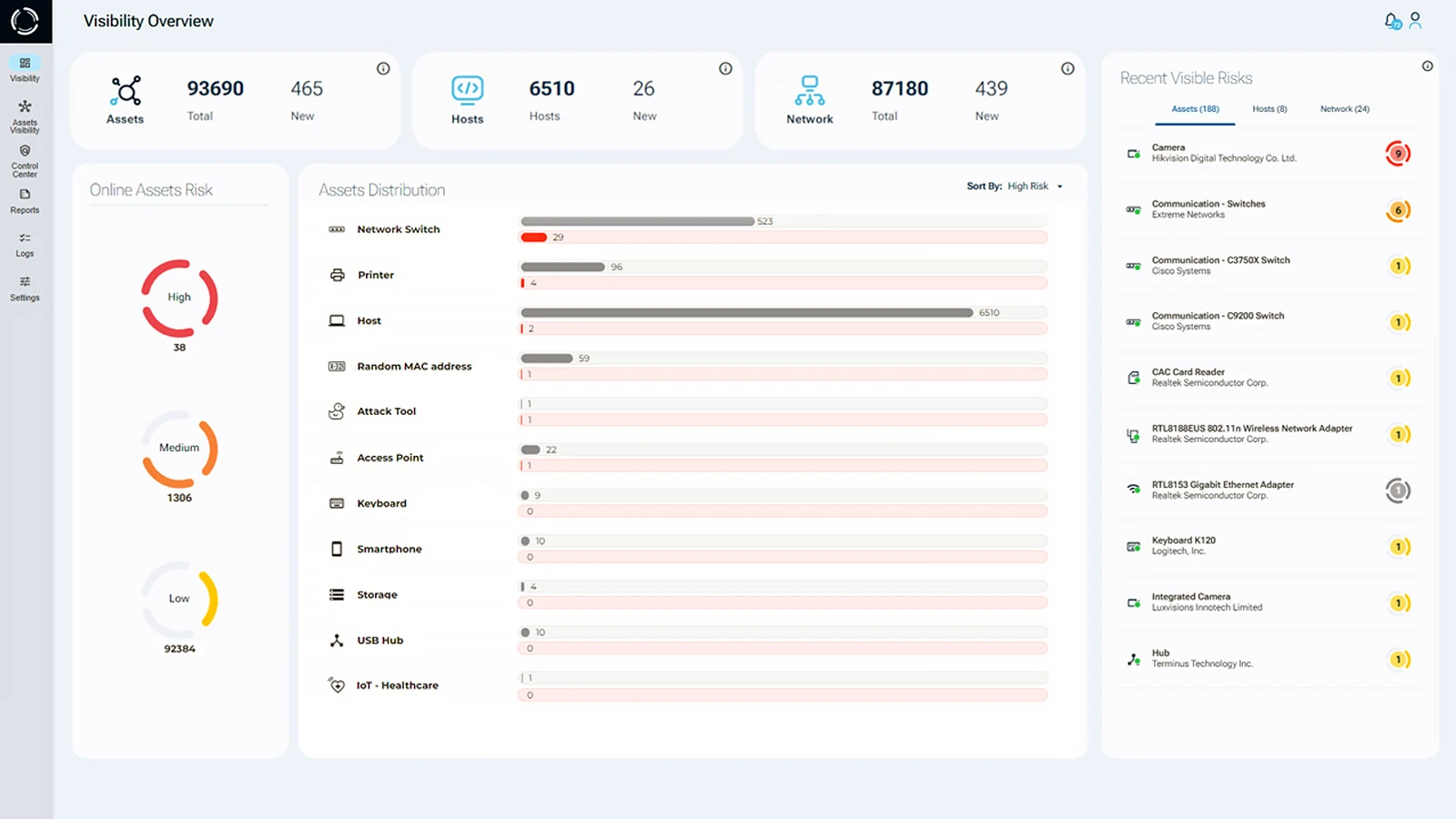What is Hardware Cybersecurity?
Hardware cybersecurity means protecting physical devices, like servers, routers, USB devices, and industrial or IoT controllers, from tampering or cyberattacks. In modern enterprise networks, hardware cybersecurity is closely tied to cyber-physical systems (CPS) protection, which ensures that devices controlling operational and industrial processes remain safe, reliable, and resilient. This approach not only safeguards IT infrastructure but also secures systems where digital networks directly interact with physical processes.
Hardware cybersecurity ensures that devices and the data they handle stay safe, available, and trustworthy. Without proper protection, rogue devices or hardware-based attack tools can bypass traditional cybersecurity defenses, leaving organizations vulnerable to data leaks, operational disruptions, and supply chain attacks.
This blog explores various hardware cybersecurity risks, including supply chain attacks, hardware implants, and unauthorized peripherals. It also explains how Sepio’s platform strengthens defenses by identifying and reducing risks through real-time monitoring and comprehensive hardware asset analysis, covering both IT and operational environments.
Hardware Attack Tools
Hardware cybersecurity is often overlooked compared to software protection, yet it is critical for defending both IT and cyber-physical systems (CPS) environments. Rogue devices, commonly referred to as hardware attack tools, can bypass traditional cybersecurity software and go undetected. This false sense of security leaves companies vulnerable to hardware-based attacks and potential data leaks.
Adding a hardware cybersecurity solution to enterprise networks is essential for detecting and stopping rogue devices at the physical layer, protecting both traditional IT systems and cyber-physical systems environments. This ensures that connected devices, including operational and industrial hardware, are continuously monitored and validated.
Validating the Security of a Hardware Device
Unlike traditional cybersecurity tools that focus on scanning peripheral connections, Sepio analyzes the intrinsic Hardware Bill of Material (HBOM), a detailed list of hardware components. This involves identifying the physical profile of each device as it connects at the physical layer. This unique capability enables Sepio to discover and profile all connected peripheral devices comprehensively. It can even detect potentially malicious USB devices hidden inside legitimate hardware. Effective hardware cybersecurity also depends on vigilant monitoring to protect devices from tampering and unauthorized access.
Hardware cybersecurity is at the core of Sepio’s Asset DNA technology, which operates at the physical layer and focuses on device existence rather than behavior. This approach effectively detects all managed, unmanaged, and hidden devices.
By leveraging innovative methods and machine learning algorithms, Sepio identifies the true source of asset risk, eliminating misconceptions caused by false profiles and behavioral assumptions.
Sepio’s platform ranks assets by their risk levels, and applies precise access controls. It automatically blocks devices that break established rules or are known attack tools. This ensures hardware-level threats are stopped before causing any harm to IT systems or cyber-physical systems (CPS).
Asset Inventory for Hardware Cybersecurity
Hardware cybersecurity requires maintaining a comprehensive inventory of all hardware-connected devices on a network.
Sepio provides full visibility into:
- All IT/OT/IoT/IoXT assets without probing network traffic.
- Unmanaged (shadow) IT devices.
- Hidden or unauthorized hardware.
Sepio’s platform stands out in the field of hardware cybersecurity by conducting a comprehensive audit of an organization’s entire hardware ecosystem. Additionally, a hardware risk indicator is used to assess actions or activities that could harm organizational assets. Furthermore, the Sepio platform provides enterprises with a risk score ranging from 1 to 9, where 9 represents a high security risk and 1 indicates a low-risk posture.

Hardware Cybersecurity: Protecting Against Hardware-Based Attacks
Phishing schemes often manipulate employees into actions that compromise security, such as plugging in BadUSB drives or clicking links that deploy malware. Investing in security training helps employees identify and defend against these threats, protecting hardware assets from compromise.
While companies strengthen defenses against traditional cyberattacks, hardware cybersecurity often remains overlooked. This leaves networks vulnerable to covert hardware attacks. Rogue devices, like USB human interface device (HID) emulating tools or physical layer network implants, can bypass detection by existing solutions, including Network Access Control (NAC), Intrusion Detection Systems (IDS), and IoT network security tools.
Sepio brings visibility and clarity to network-connected hardware, thereby enhancing hardware cybersecurity risk awareness. However, the absence of effective hardware-focused security solutions often results in unnoticed vulnerabilities and a false sense of security. Consequently, Sepio’s platform highlights the importance of hardware cybersecurity across enterprise networks, ensuring that risks from connected assets are properly addressed.

Protecting your network from hardware-based attacks is critical to maintaining integrity. Learn more about these attacks and how they threaten your hardware security. For further insights, explore our comprehensive guide on hardware cybersecurity.
Mitigate Hardware Cybersecurity Risks
Having comprehensive visibility into all network assets is a crucial prerequisite for effective hardware defense. However, the value of this knowledge lies in its practical application. Sepio’s ARM enables you to promptly discern which network devices require attention. Leveraging Asset DNA technology and policy rules, it provides alerts for high, medium, and low risks, expediting time to resolution, identifying regulatory gaps, and foiling hardware attack tools.
The real-time actionable visibility offered by Sepio enables your security experts to gain a deeper understanding of your device attack surface and, as a result, proactively manage hardware defense. Moreover, stopping social-engineering attacks and denial-of-service attempts is a key aspect of securing enterprise infrastructure. Therefore, having clear visibility and control over hardware assets is essential for your overall security posture.
Improve Your Hardware Cybersecurity
Gain a comprehensive understanding of your enterprise’s hardware cybersecurity posture with Sepio platform. Uncover weaknesses, make informed adjustments, and improve your overall security posture. Explore the power of Sepio and the valuable risk insights it provides for improved network hardware cybersecurity.
Schedule a demo. It will help you understand how to use Sepio’s patented technology to gain control of your asset risks.




